Schnoodle vs Goldendoodle: Which Breed Is Right for You?
Is the ever-affable Goldendoodle with its golden locks and love for everyone right for you? Or perhaps the Schnoodle, a breed known for its loving and protective nature, is more your speed?
In this comprehensive guide, we’ll delve deep into the contrasts between these two popular breeds—from their history and size to their coat types, personality traits, and even their healthcare needs. From which sheds more to which is happy alone in the backyard for an hour, here’s what you need to know to choose the right dog for you.
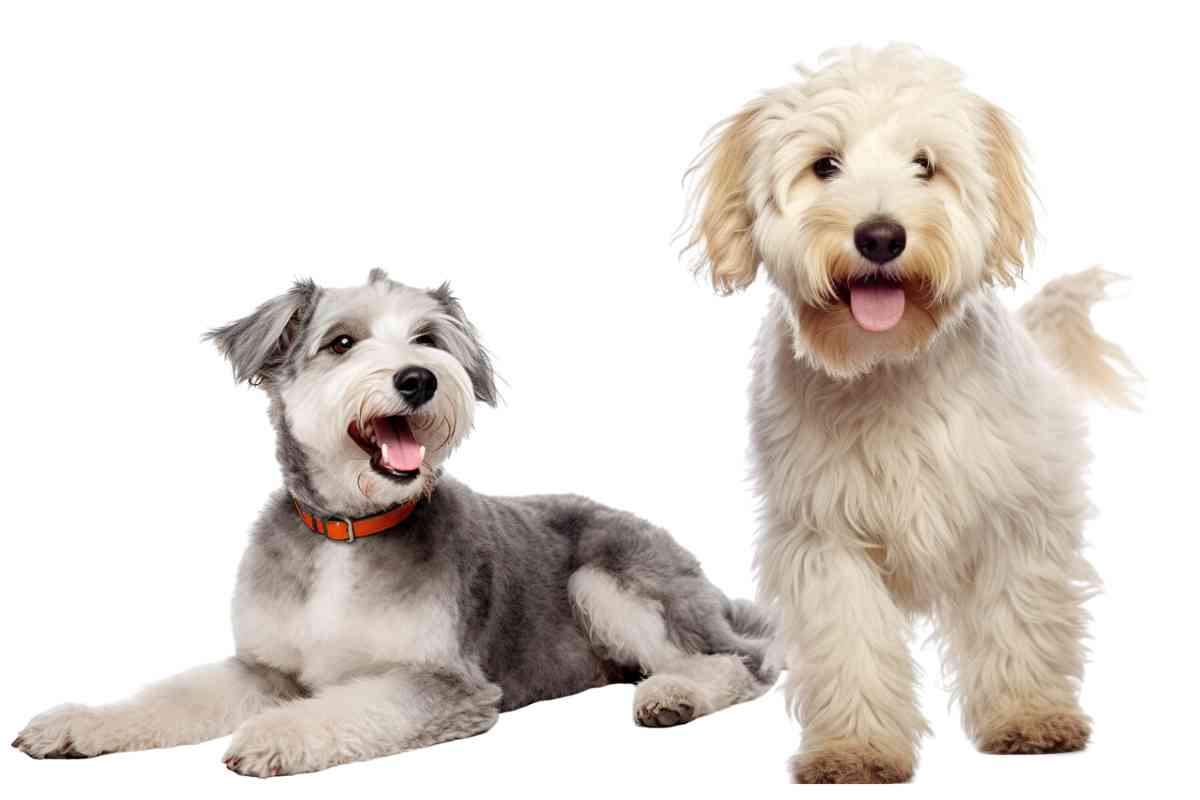
Schnoodle vs Goldendoodle
Goldendoodles are generally more outgoing and sociable, making them great for families and those who enjoy interactive play like fetch and swimming. They are also highly trainable but may require more attention and interaction. Schnoodles, on the other hand, are more reserved and independent, often bonding closely with one or two family members. They can be excellent guard dogs but may require more socialization and training to prevent inappropriate aggression.
Summary: Schnoodle vs Goldendoodle
| Criteria | Goldendoodle | Schnoodle |
|---|---|---|
| History | Hybrid of Golden Retriever and Poodle | Hybrid of Schnauzer and Poodle |
| Size | Larger, especially when bred with standard Poodles | More predictable size, varies less |
| Color and Patterns | Usually bred with red or apricot Poodles | More variable, but usually in typical Schnauzer colors |
| Coat Type | May shed to some degree, requires grooming | Less shedding, also requires grooming |
| Personality Traits | Loyal, trainable, outgoing | Loyal, trainable, reserved, protective |
| Trainability | Highly trainable but needs interaction | Highly trainable but more independent |
| Health Concerns | Joint issues, allergies, etc. | Joint issues, diabetes, epilepsy, etc. |
| Exercise Needs | High; loves fetch and swimming | High; can entertain themselves more |
| Sociability | Affable, less likely to be aggressive | Reserved, may require more socialization |
| Price and Availability | Readily available but beware of bad breeders | Less common, same caution for bad breeders |
The Tale of Two Doodles: Schnoodle vs. Goldendoodle
A Brief History: Mixed Breed Hybrids
When it comes to popular mixed breed hybrids, the Schnoodle and the Goldendoodle are often at the top of the list. It’s important to note that neither of these breeds is a registered purebred. Most Schnoodles and Goldendoodles are puppies born from one purebred parent mated with another purebred parent of a different breed. This hybridization results in unique characteristics, temperaments, and traits that make these dogs great family pets.
The Common Thread: The Poodle
Both the Schnoodle and the Goldendoodle share a common lineage with the Poodle, a breed renowned for its intelligence, obedience, and hypoallergenic low-shedding coat. The Poodle itself has a rich history, originating in Germany but gaining fame in France. It’s recognized by the American Kennel Club (AKC) and is one of the most popular dog breeds globally.
The Golden Retriever: A Family Companion
The Goldendoodle is a mix between a Golden Retriever and a Poodle. Golden Retrievers are known for their friendly and tolerant attitude. They are great family dogs and excel in obedience and agility. Originating from Scotland in the late 19th century, Golden Retrievers were initially bred for hunting but quickly became popular as companion animals.

The Schnauzer: A Dog of Many Traits
On the other side, the Schnoodle is a cross between a Schnauzer and a Poodle. Schnauzers originated in Germany and were initially bred as farm dogs, skilled in hunting and guarding. They are known for their distinctive appearance and medium size, and they have a strong presence in dog shows and agility courses.
The Birth of the Goldendoodle
The Goldendoodle came into existence in the 1990s, aiming to combine the Golden Retriever’s excellent temperament with the Poodle’s hypoallergenic coat. This breed has gained immense popularity, especially for families with allergies. They are often described as great family dogs that require daily exercise and mental stimulation.
The Rise of the Schnoodle
The Schnoodle, however, has a more varied history, with its origins tracing back to the 1980s. The goal was to create a dog that had the Schnauzer’s robustness and the Poodle’s intelligence. Schnoodles have become popular for apartment living because of their independent, intelligent nature. They are also known for their versatility, excelling in tasks that require agility and obedience.
Size Matters: Comparing the Schnoodle and Goldendoodle
When it comes to choosing a pet, size is often a significant factor, especially if you’re considering apartment living or have specific space constraints. The Schnoodle and Goldendoodle differ quite a bit in this regard, offering a range of sizes that can fit various lifestyles.
The Goldendoodle: A Size Spectrum
Goldendoodles come from a lineage that includes the Golden Retriever, a large dog breed. When a Golden Retriever is bred with a Standard Poodle, the resulting Goldendoodle puppies are predictably large, often weighing between 50 to 90 pounds. These dogs are well-suited for families with a backyard or those who can provide daily exercise and mental stimulation in a spacious environment.

However, the size of a Goldendoodle can vary when bred with Miniature Poodles. In such cases, the Goldendoodle can be considerably smaller, ranging from 15 to 35 pounds. This size variation makes the Goldendoodle a versatile choice for potential dog owners, but it also means that their size can be somewhat unpredictable.
The Schnoodle: Predictable Proportions
In contrast, the Schnoodle tends to have a more predictable size, thanks to the consistent sizes of both the Schnauzer and the Poodle. Schnauzers come in Miniature, Standard, and Giant sizes, and when bred with a Poodle of a similar size, the resulting Schnoodle generally falls within a predictable weight and height range. For example, a Miniature Schnauzer bred with a Miniature Poodle will result in a small Schnoodle, typically weighing between 10 to 20 pounds.
Size and Lifestyle
The Schnoodle’s more predictable size makes it easier for potential owners to know what to expect, especially if they have specific needs like apartment living or limited space for pets. On the other hand, the Goldendoodle’s size can vary, making it essential for potential owners to consider the size of the Poodle parent when adopting or purchasing a puppy.
*Keep in mind that due to hybrid vigor, a doodle dog tends to be a bit bigger than either of its parents.

Schnoodle and Goldendoodle Coats and What to Expect
One of the most fascinating aspects of Doodle breeds like the Schnoodle and Goldendoodle is their wide range of possible coat colors and patterns. Thanks to their Poodle heritage, these hybrids can inherit an array of colors, making each puppy unique in its own way.
The Poodle’s Colorful Legacy
Poodles come in a variety of colors and patterns, including:
- Black
- White
- Apricot
- Red
- Blue
- Silver
- Cream
- Sable
- Phantom (two-tone)
The Other Parent’s Influence
The color and pattern of the Doodle can also be influenced by the other parent breed. For example, Golden Retrievers are typically golden, cream, or red, while Schnauzers come in:
- Salt and Pepper
- Black and Silver
- Solid Black
Predictable Patterns: The Phantom Trait
When breeders aim for a specific pattern, such as the “phantom” pattern that exists in both Schnauzers and Poodles, they can achieve this trait fairly predictably. However, if a desired pattern doesn’t exist in both parent breeds, achieving that particular look becomes more challenging.
Goldendoodle Colors: The Classic Golden Shade
Goldendoodles often inherit the classic golden shade, as they are usually bred with red or apricot Poodles to mimic the Golden Retriever’s iconic color. However, they can technically inherit any color that exists in the Poodle’s palette.
Schnoodle Colors: A Spectrum of Possibilities
Schnoodles are more variable in color but usually appear in typical Schnauzer shades like salt and pepper or black and silver. When it comes to overlapping colors that are likely and predictable in Schnoodles, the following are common:
- Black
- White
- Salt and Pepper
- Black and Silver
- Phantom
- Parti
In summary, the coat color of a Schnoodle or Goldendoodle can be just about anything, depending on the colors and patterns present in the parent breeds. Whether you’re drawn to the classic golden shade of a Goldendoodle or the more variable, yet predictable, colors of a Schnoodle, there’s a Doodle out there that’s the perfect hue for you.
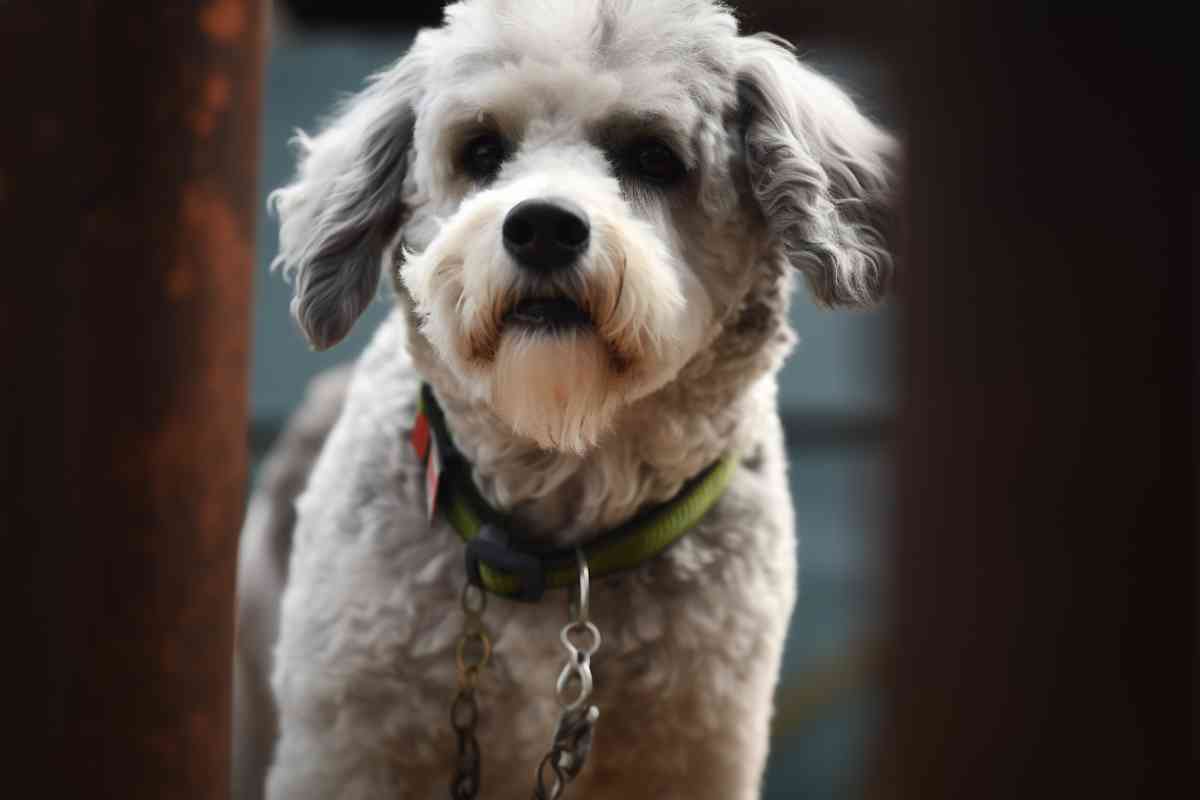
The Tale of Two Coats: Schnoodles vs. Goldendoodles
When it comes to choosing between a Schnoodle and a Goldendoodle, the type of coat they have can be a significant factor.
Both breeds inherit traits from a no-shed, single-coat breed (the Poodle) and a double-coated breed (the Schnauzer for Schnoodles and the Golden Retriever for Goldendoodles). However, the texture, shedding, and maintenance requirements of these coats differ substantially.
The Schnoodle Coat: Low-Shedding and Hypoallergenic
A Schnauzer’s coat is double-layered, with a tough, wiry top layer and a softer, cotton-like undercoat. This makes the Schnoodle’s coat hypoallergenic and less prone to shedding.
The wiry texture acts as a protective barrier against the elements, requiring regular grooming to prevent matting.
In Schnoodles, the coat may or may not have this protective layer. Usually they have it to some degree, or the outer coat is sprinkled along with the inner.
Special care is needed for this distinct coat. Daily brushing with a soft-bristled or slicker brush and a medium-toothed comb for the legs and face is recommended. Schnoodles generally don’t shed, but they do require frequent grooming to keep their coat in optimal condition.
Schnoodle Grooming Tips:
- Brushing: Schnoodles are prone to matting, so brushing should be daily.
- Bathing: Once a month, using dog-friendly or breed-specific shampoo.
- Trimming: The coat should be trimmed, clipped, or stripped rather than shaved to maintain its texture.
The Goldendoodle Coat: Moderate Shedding
On the other hand, the Golden Retriever’s coat is thick and water-repellent but sheds moderately throughout the year.
This means that a Goldendoodle’s coat will shed to some degree, unlike the Schnoodle. Regular brushing is essential to remove old hair, especially before and after bathing, to avoid having it mat with the non-shedding hair.

Goldendoodle Grooming Tips:
- Brushing: Use a pin brush for heavy shedding and a metal comb for feathering behind the ears, chest, legs, and tail.
- Bathing: Quality canine shampoo and conditioner are recommended. Rinse the coat twice to ensure all shampoo is out.
- Drying: Towel dry and use a canine cool air hairdryer.
Maintenance and Care
Both breeds require a lot of care, but the type of care differs:
- Schnoodles: Require frequent grooming to prevent their coat from matting and to maintain its wiry texture.
- Goldendoodles: Require regular brushing to manage shedding and avoid matting and may need more frequent baths.
In Summary
Whether you’re looking for a hypoallergenic, low-shedding companion like the Schnoodle or you don’t mind a bit of shedding and have fallen in love with the Goldendoodle’s golden charm, understanding their coat types will help you make an informed decision.
Personality Traits: Schnoodles vs. Goldendoodles
When it comes to the personality of mixed-breed dogs like Schnoodles and Goldendoodles, the apple doesn’t fall far from the tree—or in this case, the trees.
The more similar the parent breeds are in temperament, the more predictable the personality traits of their puppies will be. However, when the parent breeds have contrasting personalities, the resulting puppies can display a wide range of traits.
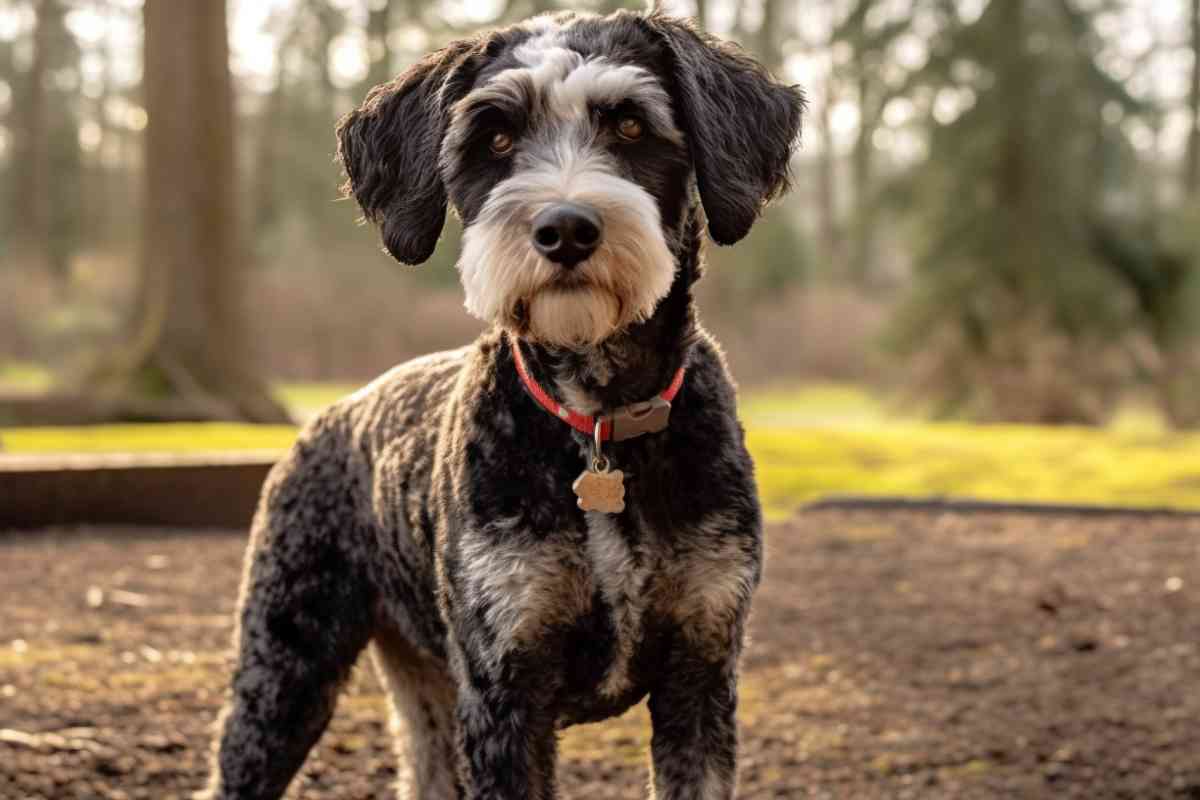
Goldendoodles: A Blend of Loyalty and Affability
Both Golden Retrievers and Poodles are known for their loyalty and trainability, making it highly likely that their Goldendoodle offspring will inherit these traits. However, Poodles tend to be more sensitive and reserved, while Golden Retrievers are generally outgoing and affable.
This means that Goldendoodle puppies can show a range of these traits, depending on what they inherit from each parent. While some may be outgoing and love everyone they meet, others might be a bit more reserved and selective in their social interactions.
Schnoodles: Reserved Yet Protective
Schnauzers and Poodles both tend to be a bit more on the reserved side, making it likely that Schnoodles will inherit this trait. However, Schnauzers are also known for their bravery and protective nature.
They are excellent protection dogs and are one of the few breeds that regularly place in Schutzhund trials. This means that Schnoodles may require more handling and socialization to avoid inappropriate aggression.

Social Preferences and Dog Selectivity
Schnauzers can be more dog-selective, and Poodles may also display this trait. In contrast, Golden Retrievers are generally amiable and get along well with everyone, including other dogs. This suggests that Schnoodles may be more selective in their dog friendships, requiring careful socialization to ensure positive interactions with other dogs.
Moreover, Schnoodles may develop a stronger bond with a couple of members in the household, displaying loyalty in a more focused manner. Goldendoodles, influenced by the Golden Retriever’s love for everyone, are more likely to spread their affection equally among all family members.
Trainability: Goldendoodles vs. Schnoodles
When it comes to trainability, both Goldendoodles and Schnoodles have a strong genetic advantage. Their parent breeds—Golden Retrievers, Poodles, and Schnauzers—are all known for their intelligence and trainability.
However, there are some nuances to consider when training these mixed-breed dogs, as their parent breeds have different tendencies that can influence their learning styles.
Goldendoodles: Eager to Please
Both Golden Retrievers and Poodles are known for their eagerness to please their owners, which often makes them highly trainable. They are quick learners who respond well to positive reinforcement techniques.
Whether you’re interested in obedience training, agility, or even more specialized tasks, Goldendoodles are generally quick to catch on.
Schnoodles: Independent Thinkers
Schnauzers, on the other hand, are known for their independence. They are intelligent dogs, but they also have a mind of their own.
This trait can make Schnoodles more self-sufficient and able to entertain themselves. However, their independent streak may require a bit more creativity on the part of the trainer to keep them engaged and focused during training sessions.
The Challenge of Prey Drive
Another aspect to consider is the Schnauzer’s high prey drive. This instinctual behavior, combined with their independent nature, can make it challenging to train Schnoodles not to chase after squirrels, birds, or other small animals.
It may require additional effort and specialized training techniques to manage this behavior effectively.
Training Tips
For Schnoodles, using high-value rewards and engaging toys can be particularly effective in capturing their attention. Incorporating play and interactive activities into training sessions can also help keep them focused.
For Goldendoodles, their eagerness to please makes them highly responsive to positive reinforcement, so consistent praise and treats can go a long way in their training.

Health Considerations: Goldendoodles vs. Schnoodles
When it comes to the health of mixed-breed dogs like Goldendoodles and Schnoodles, it’s essential to consider the health issues prevalent in their parent breeds.
While the concept of “hybrid vigor” suggests that first-generation mixes may be healthier than purebred dogs, it’s still crucial to be aware of the potential health risks.
Common Health Issues in Parent Breeds
Golden Retrievers:
- Hip Dysplasia
- Elbow Dysplasia
- Cancer
- Heart Issues
- Allergies
Poodles (Standard and Miniature):
- Hip Dysplasia
- Progressive Retinal Atrophy
- Addison’s Disease
- Epilepsy
- Hypothyroidism
Schnauzers (Standard and Miniature):
- Hip Dysplasia
- Cataracts
- Pancreatitis
- Diabetes
- Liver Shunts (more common in Miniature Schnauzers)
Overlapping Health Concerns
Both Goldendoodles and Schnoodles are at risk for Hip Dysplasia, given that this condition is common in all three parent breeds.
Additionally, Poodles and Schnauzers share a risk for developing eye issues like Progressive Retinal Atrophy and Cataracts, making it more likely that Schnoodles could inherit these conditions.
Size-Specific Concerns
Miniature Poodles and Miniature Schnauzers have some health issues that are less common in their standard-sized counterparts.
For example, Miniature Schnauzers are more prone to liver shunts, while Miniature Poodles may be more susceptible to Legg-Calvé-Perthes disease, a hip condition. When these smaller breeds are involved in the mix, it’s essential to be aware of these additional health risks.
Hybrid Vigor: A Health Advantage?
The concept of “hybrid vigor” suggests that the genetic diversity in mixed-breed dogs can result in healthier animals. While this can be true to some extent, it’s not a guarantee.
First-generation Goldendoodles and Schnoodles may indeed be less prone to inherited diseases than their purebred counterparts, but they are not entirely risk-free.
Preventative Measures
Regular veterinary check-ups, a balanced diet, and daily exercise are crucial for any dog’s well-being.
For breeds prone to specific health issues—like joint problems in Golden Retrievers or diabetes in Schnauzers—regular screenings and early intervention can make a significant difference.

Exercise Needs: Goldendoodles vs. Schnoodles
Both Goldendoodles and Schnoodles are likely to be high-energy dogs, given that their parent breeds—Golden Retrievers, Poodles, and Schnauzers—are all known for their zest for life. However, the way they prefer to expend that energy can differ significantly.
Goldendoodles: Social Butterflies of the Exercise World
Goldendoodles often inherit the Golden Retriever’s love for social interaction and the Poodle’s intelligence. As a result, they usually require not just physical exercise but also mental stimulation and human interaction.
Activities like fetch, swimming, and agility courses are excellent ways to keep a Goldendoodle entertained and well-exercised. They thrive on activities that allow them to interact closely with their human companions, making them less likely to be content with solitary play.
Schnoodles: The Independent Exercisers
Schnoodles, on the other hand, often inherit the Schnauzer’s more independent nature. While they still require regular exercise to stay healthy, they are generally better at entertaining themselves, especially the miniature varieties.
If you have a yard where lizards or squirrels frequent, a Schnoodle can often occupy themselves for hours with the “hunt.” This high prey drive, combined with their independence, means they may require less structured playtime with humans compared to Goldendoodles.
Indoor play is another area where Schnoodles excel. They are often keen on puzzle toys that challenge their intelligence. These can be a great option for mental stimulation, especially on days when outdoor exercise is limited.
Price and Availability: Goldendoodles vs. Schnoodles
Goldendoodles have surged in popularity, making them readily available in many areas. However, this popularity comes with its own set of challenges, mainly the prevalence of puppy mills and backyard breeders looking to cash in on the trend.
Schnoodles are not as commonly found as Goldendoodles, but they have been gaining attention. Just like with Goldendoodles, the Schnoodle market is not immune to unethical breeding practices.
Buyer Beware: Tips for Prospective Owners
Regardless of whether you’re interested in a Goldendoodle or a Schnoodle, it’s imperative to do your due diligence:
- Visit the Breeder: Always insist on visiting the place where the puppies are raised. This visit will give you insights into the living conditions of the dogs and the ethics of the breeder.
- Meet the Parents: Make sure to meet the puppy’s parents. This meeting can provide valuable information about the temperament and health of your future pup.
- Check the Papers: Ask for all relevant paperwork. The parent dogs should be health-screened and registered with the American Kennel Club (AKC) or a similar reputable organization.
- Size Consistency for Schnoodles: If you’re opting for a Schnoodle, ensure that the parent dogs are similarly sized. Schnauzers and Poodles come in different sizes, and breeding similarly sized parents will give you a more predictable idea of how large your Schnoodle will grow.
- Expect to Pay. Prices can vary widely, but you should expect to pay anywhere from $1,000 to $3,000 for a well-bred Goldendoodle or Schnoodle puppy.
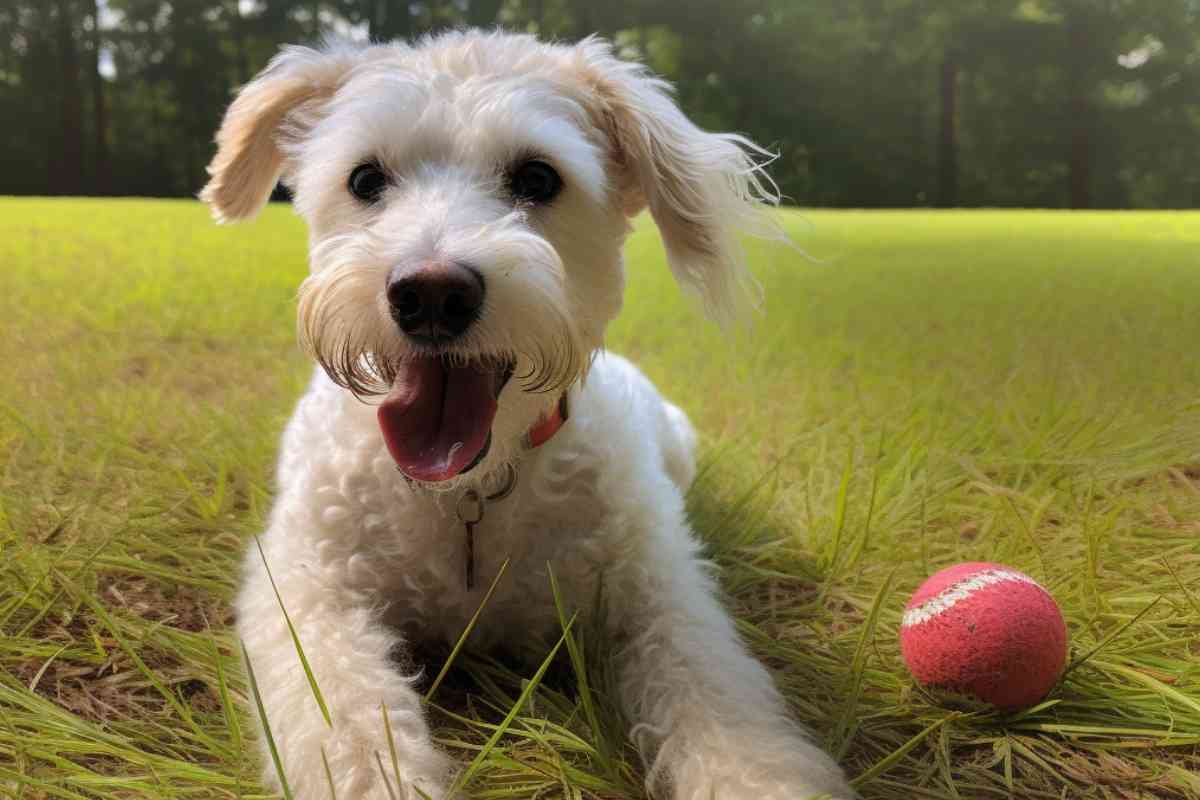
Which Breed Fits Your Lifestyle: Goldendoodle vs. Schnoodle
Choosing between a Goldendoodle and a Schnoodle is not just a matter of preference for a fluffy companion; it’s about finding a pet that complements your lifestyle. Here’s a breakdown to help you decide:
Family Dynamics
- Goldendoodles are generally outgoing and affable, making them great for families with children and other pets. They’re likely to love everyone in the household equally.
- Schnoodles, on the other hand, may be more reserved and selective, often bonding closely with one or two family members. They can be excellent guard dogs but may require more socialization to prevent inappropriate aggression.
Exercise Needs
- If you’re an active person who loves outdoor activities like swimming and fetch, a Goldendoodle would be a great match. They crave interaction and physical engagement.
- Schnoodles are also high-energy but can be more independent. If you have a yard where they can chase lizards or squirrels, they can often entertain themselves. They also enjoy puzzle toys for indoor play.
Trainability
- Both breeds are highly trainable, but Goldendoodles may require more interactive training sessions.
- Schnoodles are smart but independent, so you might need to get creative to keep them focused during training. Their high prey drive may also make it challenging to train them not to chase things.
Health Concerns
- Both breeds benefit from the hybrid vigor of first-generation mixes, but each has its own set of health concerns inherited from their parent breeds. Make sure to consult with a vet and get health screenings regardless of your choice.
Social Needs
- Goldendoodles are generally more sociable and less likely to be aggressive towards people or other animals.
- Schnoodles are more reserved and may require extensive training and socialization to ensure they are well-behaved around people and other animals.
Budget and Availability
- Goldendoodles are more readily available but be cautious of puppy mills and backyard breeders.
- Schnoodles are less common, but the same cautions apply. Always insist on seeing where the dogs are raised and meeting the parents. Ensure that the parent dogs are health screened and AKC registered.
In summary, if you’re looking for a dog that is outgoing, loves interactive play, and is great for families, a Goldendoodle may be the better choice.
If you prefer a dog that is a bit more independent, can entertain itself, and offers a protective instinct, then a Schnoodle could be the right fit for you.
Regardless of your choice, make sure to opt for a reputable breeder and prepare for a lifetime of love and companionship.
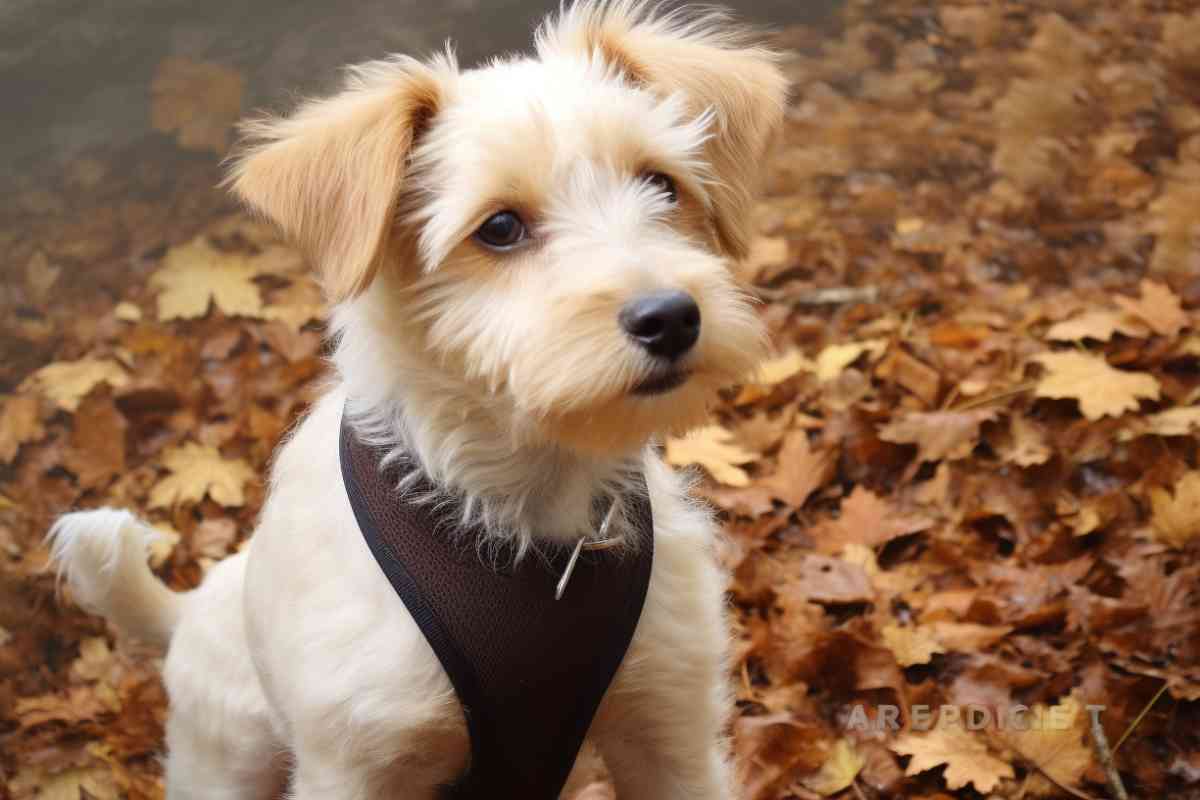
Frequently Asked Questions
What is a Schnoodle?
A Schnoodle is a crossbreed between a Schnauzer and a Poodle. They are known for their intelligence, loyalty, and playful personalities. Schnoodles come in different sizes, depending on the size of the Poodle parent, and can have a curly or wavy coat.
What is a Goldendoodle?
A Goldendoodle is a crossbreed between a Golden Retriever and a Poodle. They are friendly, social, and make great family pets. Goldendoodles come in different sizes, depending on the size of the Poodle parent, and can have a curly or wavy coat.
What are the differences between Schnoodles and Goldendoodles?
Schnoodles and Goldendoodles have some similarities, but there are also some differences. One of the main differences is their size. Schnoodles are generally smaller than Goldendoodles. Schnoodles also tend to have a more reserved personality, while Goldendoodles are known for being friendly and outgoing. Additionally, Goldendoodles are more likely to shed than Schnoodles.
What are the pros and cons of owning a Schnoodle or Goldendoodle?
Both Schnoodles and Goldendoodles make great pets, but there are pros and cons to owning each breed. Some of the pros of owning a Schnoodle include their intelligence, loyalty, and hypoallergenic coat. Some of the cons include their reserved personality and potential for health issues. Some of the pros of owning a Goldendoodle include their friendly and outgoing personality, loyalty, and hypoallergenic coat. Some of the cons include their potential for shedding and health issues.
Are Schnoodles or Goldendoodles more calm?
Schnoodles and Goldendoodles both have the potential to be calm pets, but it ultimately depends on the individual dog’s personality and training. Schnoodles tend to be more reserved and may require more socialization to become comfortable in new situations, while Goldendoodles are known for being friendly and outgoing.
Which is better for me, a Schnoodle or a Goldendoodle?
Deciding between a Schnoodle and a Goldendoodle ultimately depends on your individual lifestyle and preferences. If you are looking for a smaller dog with a more reserved personality, a Schnoodle may be a better fit for you. If you are looking for a larger, more outgoing dog, a Goldendoodle may be a better fit. It’s important to do your research and meet both breeds before making a decision.